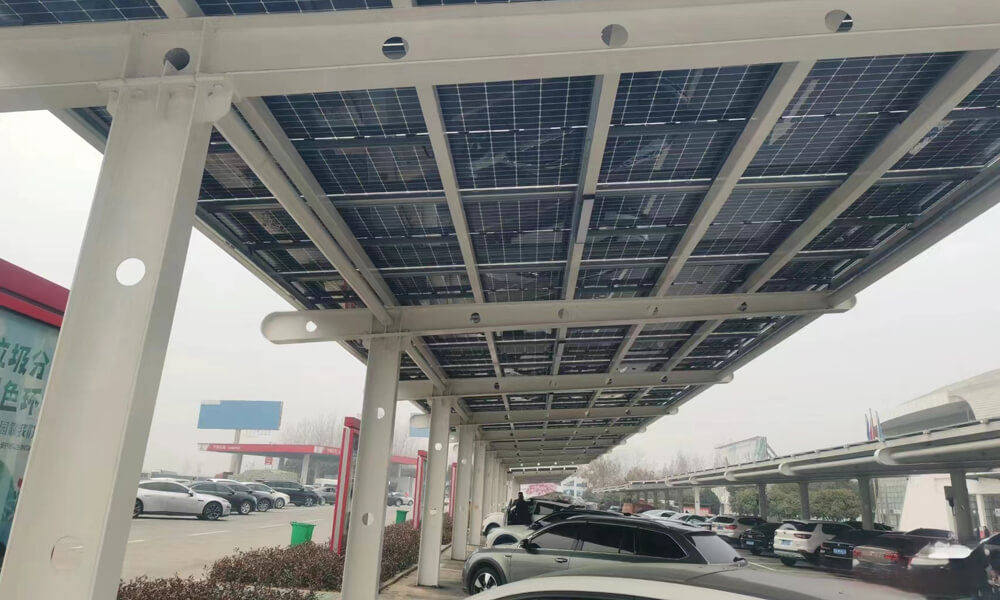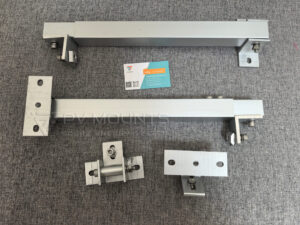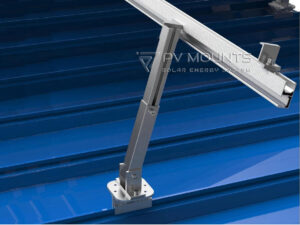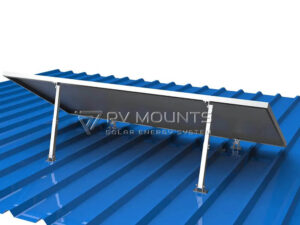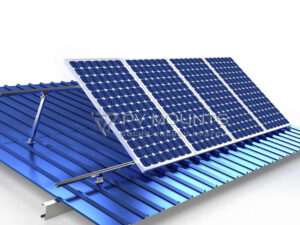Napelemes autóbeállók a megújuló energiát hasznosító technológia és a hagyományos parkolási megoldások innovatív ötvözete. Fotovoltaikus (PV) paneleket használnak a napfény elektromos árammá történő átalakítására, így kettős funkciót látnak el: fedett parkolót kínálnak, miközben energiát termelnek. Ez a koncepció egyre nagyobb teret nyer a környezettudatos magánszemélyek és szervezetek körében, akik csökkenteni szeretnék a szénlábnyomukat anélkül, hogy feláldoznák a területet vagy az esztétikai vonzerőt. Így felfedezzük, hogy mennyibe kerül egy napelemes kocsibeálló.
A napelemes gépkocsibeállók alkalmazása számos előnnyel jár, nemcsak környezetvédelmi, hanem gazdasági szempontból is. Környezetvédelmi szempontból jelentősen hozzájárulnak az üvegházhatású gázok kibocsátásának csökkentéséhez a napenergia, egy tiszta és kimeríthetetlen forrás hasznosításával. Gazdaságilag a villanyszámlák idővel csökkennek, mivel a megtermelt energiát közvetlenül az ingatlan használja fel, a többletenergiát pedig gyakran vissza lehet adni a hálózatba. Emellett növelik az ingatlan értékét, így bölcs befektetésnek számítanak a jövőre nézve.
Tartalomjegyzék
1. A Solar Carports költségeit befolyásoló tényezők
1.1 Méret és kapacitás
A napelemes autóbeálló mérete és kapacitása közvetlenül befolyásolja a költségeit. A nagyobb méretű, több jármű befogadására alkalmas és több napelemmel felszerelt autóbeállók természetesen magasabb kezdeti beruházást igényelnek. A kapacitás nem csak a fizikai méretre, hanem a kilowattban (kW) mért elektromos teljesítményre is vonatkozik, ami azt diktálja, hogy mennyi energiát képes termelni a kocsibeálló.
1.2 Anyagok és tartósság
A szerkezet és a napelemek anyagának kiválasztása egyaránt döntő szerepet játszik a költségek meghatározásában. A kiváló minőségű, tartós anyagok, mint például a horganyzott acél a vázhoz és a nagy hatékonyságú napelemek magasabb kezdeti költséggel járhatnak, de jobb élettartamot és teljesítményt kínálnak, ami idővel nagyobb megtakarítást eredményez.
1.3 A napelemek típusa
Az autóbeállóhoz választott napelemek típusa eltérő lehet, beleértve a monokristályos, polikristályos vagy vékonyrétegű paneleket. A magas hatásfokukról és elegáns megjelenésükről ismert monokristályos panelek általában drágábbak, mint a többi típus. A választás a költségek, az esztétikai preferenciák és a kívánt hatékonyság közötti egyensúlytól függ.
1.4 A telepítés bonyolultsága
A telepítési folyamat bonyolultsága szintén befolyásolhatja a teljes költséget. Az olyan tényezők, mint a kocsibeálló elhelyezkedése, a helyszín előkészítésének szükségessége és a meglévő elektromos rendszerekkel való integráció, nagymértékben eltérhetnek. A kihívást jelentő helyszíneken történő összetett telepítések vagy a jelentős elektromos korszerűsítéseket igénylő telepítések magasabb költségekkel járhatnak.
2. A Solar Carports típusai
A napelemes autóbeállók a funkcionalitás és a fenntarthatóság fúzióját képviselik, menedéket nyújtanak a járműveknek, miközben megújuló energiát termelnek. Ez az innovatív megoldás mind a lakossági, mind a kereskedelmi szektorban alkalmazásra került, mindkettő egyedi jellemzőkkel rendelkezik, amelyek az egyedi igényekhez és célkitűzésekhez igazodnak.
2.1 Lakossági vs. kereskedelmi napelemes autóbeállók
A lakossági és a kereskedelmi célú napelemes gépkocsibeállók közötti különbség a méretükben, összetettségükben és az általuk kínált kiegészítő funkciókban rejlik.
Lakossági Solar Carports
A lakossági napelemes autóbeállókat úgy tervezték, hogy zökkenőmentesen illeszkedjenek az otthon esztétikájához, miközben praktikus, környezetbarát energetikai megoldást kínálnak. Ezek a szerkezetek általában egy vagy két jármű elhelyezésére alkalmasak, és kevésbé összetettek, mint kereskedelmi társaik. Kettős célt szolgálnak: védik a járműveket az időjárás viszontagságaitól, és a napenergia-termelés révén csökkentik a háztartások energiaköltségeit. A lakóházi carportok gyakran az otthon lakóterének kiterjesztéseivé válnak, tükrözve a személyes stílust és a környezeti értékeket.
A lakossági napelemes autóbeállók egyszerűsége nem von le a hatékonyságukból. Úgy tervezték őket, hogy optimalizálják a rendelkezésre álló helyet és a napsütést, biztosítva, hogy a lakástulajdonosok maximalizálják a befektetésüket. A napelemes autóbeállók lakóépületekbe történő integrálása a fenntartható életmód felé mutató növekvő tendenciát hangsúlyozza, ahol minden négyzetméternyi területet kihasználnak az energiafüggetlenséghez való hozzájárulás érdekében.
Kereskedelmi Solar Carports
A kereskedelmi célú napelemes autóbeállók a skálázhatóság és a multifunkcionalitás bizonyítékai. Ezek a berendezések nagyobb területeket fednek le, és járműflották befogadására alkalmasak, és általában üzleti parkokban, bevásárlóközpontokban és közintézményekben találhatók. A kereskedelmi parkolóházak méretéből adódóan jelentős energiatermelést tesznek lehetővé, ami a kísérő létesítmények energiaigényének jelentős részét ellensúlyozhatja.
A kereskedelmi célú napelemes gépkocsibeállók egyik jellemzője az elektromos járművek (EV) töltőállomásainak integrálása. Az elektromos járművek egyre gyorsuló elterjedésével a vállalkozások egyre inkább beépítik a töltőinfrastruktúrát a napelemes autóbeálló-projektjeikbe. Ez nemcsak értékes szolgáltatást nyújt az alkalmazottak és az ügyfelek számára, hanem a telephely fenntarthatósági referenciáit is növeli.
2.2 Testreszabható funkciók és formatervezés
A napelemes autóbeállók sokoldalúsága a személyre szabható funkciók és formatervezési megoldások széles skálájában nyilvánul meg, amelyek mind a lakossági, mind a kereskedelmi ügyfelek számára elérhetőek. Ezek az adaptációk biztosítják, hogy minden egyes létesítmény megfeleljen a környezet sajátos esztétikai és funkcionális követelményeinek.
Állítható dőlésszögek
Az egyik legfontosabb funkció a napelemek dőlésszögének beállítása. Ez a testreszabás lehetővé teszi a napenergia-felvétel optimalizálását azáltal, hogy a paneleket a nap pályájához igazítja a különböző évszakokban. A beállítható dőlésszögek jelentősen befolyásolhatják az energiatermelés hatékonyságát, így ez a funkció a tervezési fázisban kulcsfontosságú szempont.
Integrált világítás
A napelemes kocsibeállók integrált világítási rendszereket is tartalmazhatnak, ami növeli a biztonságot és a láthatóságot az esti órákban. Ezt a világítást maguk a napelemek is működtethetik, így egy önfenntartó világítási rendszer jön létre, amely növeli a kocsibeálló hasznosságát anélkül, hogy növelné az energiaköltségeket.
Változó tetőkialakítások
A napelemes autóbeállók tetőszerkezete egy másik olyan terület, ahol a testreszabás kulcsfontosságú szerepet játszik. A lapos tetőtől a nyeregtetőig a kialakítás úgy választható meg, hogy kiegészítse a környező építészetet, és megfeleljen az adott térbeli vagy esztétikai preferenciáknak. Az innovatív anyagok és építészeti technikák lehetővé teszik olyan vizuálisan feltűnő szerkezetek létrehozását, amelyek funkcionális berendezésekként és dizájnmegjelenítésként egyaránt szolgálnak.
Ezeknek a testreszabható funkcióknak a napkollektoros autóbeállókba történő beépítése nemcsak a funkcionalitásukat növeli, hanem nagyobb fokú személyre szabhatóságot is lehetővé tesz. Akár egy lakóházi feljáróhoz, akár egy kereskedelmi parkolóhoz, a napelemes autóbeállók bármely hely egyedi karakteréhez igazíthatók, így sokoldalú és vonzó lehetőséget jelentenek azok számára, akik a megújuló energiával kapcsolatos infrastruktúrába kívánnak befektetni.
3. Költségek lebontása
A napelemes autóbeálló-berendezések pénzügyi helyzetében való eligazodáshoz alaposan meg kell ismerni a kezdeti beruházást, a lehetséges ösztönzőket és a folyamatos működési költségeket. Ez az átfogó költségelemzés biztosítja, hogy a magánszemélyek és a vállalkozások megalapozott döntéseket hozhassanak, és egyensúlyba hozhassák az előzetes kiadásokat a hosszú távú megtakarításokkal és előnyökkel.
3.1 Kezdeti beruházás
A napenergia autóbeállón keresztül történő hasznosítása felé vezető út egy kezdeti beruházással kezdődik, amely több kritikus összetevőt foglal magában. Ez a befektetés nem egy egységes szám, hanem a projekt sajátosságaitól függően jelentősen változik.
Anyagok
A kezdeti beruházás jelentős részét az anyagköltségek teszik ki, beleértve a napelemeket, a rögzítő hardvereket és a szerkezeti elemeket. Az anyagválasztás nagyban befolyásolhatja a telepítés költségeit és hatékonyságát is, a nagy hatékonyságú panelek és a tartós anyagok gyakran felárat jelentenek.
Munkaerő
A munkadíj, amely magában foglalja a napelemes autóbeálló telepítését és elektromos vezetékezését, régiónként és a projekt összetettségétől függően változik. A szakszerű telepítés biztosítja az optimális teljesítményt és a helyi előírásoknak való megfelelést, de növeli az előzetes költségeket.
Engedélyek és rendeletek
A szükséges engedélyek beszerzése és a helyi építési előírások betartása alapvető lépések, amelyek költségekkel járnak. Ezek a jogi követelmények joghatóságonként nagymértékben eltérhetnek, ami hatással van a teljes beruházásra.
Helyszín előkészítése
A helyszín előkészítése, beleértve a szükséges tereprendezést, az alapozási munkákat vagy a meglévő szerkezetek módosítását, további költségtényezőt jelent. A szükséges előkészítés mértéke a telepítési hely állapotától és elrendezésétől függ.
3.2 Lehetséges adójóváírások és ösztönzők
A napenergia környezeti és gazdasági előnyeit felismerve különböző kormányzati szervek ösztönzőket kínálnak a kezdeti beruházás ellentételezésére.
Szövetségi adójóváírások
Számos országban a szövetségi kormányok adókedvezményt nyújtanak a napenergia-berendezésekre, ami közvetlenül csökkenti a fizetendő adó összegét. Ezek a hitelek a telepítési költségek jelentős százalékát fedezhetik, így a napelemes autóbeállók anyagilag is elérhetőbbé válnak.
Állam-specifikus kedvezmények
Az állami vagy regionális ösztönzők tovább csökkenthetik a költségeket. Ezek a kedvezmények gyakran eltérő értékűek és elérhetőek, és így ösztönzik a napenergia-technológiák helyi alkalmazását.
A közüzemi társaságok ösztönzői
Egyes közműszolgáltatók ösztönzőket kínálnak a napelemes telepítésekhez, beleértve a megtermelt többletenergia visszavásárlási programjait, ami tovább növeli a napelemes gépkocsibeállók pénzügyi életképességét.
3.3 Karbantartási és üzemeltetési költségek
Bár a napelemes autóbeállókat alacsony karbantartási igényük miatt dicsérik, az optimális teljesítmény biztosítása érdekében számolni kell néhány folyamatos költséggel.
Tisztítás és karbantartás
A napelemek rendszeres tisztítása elengedhetetlen a hatékonyság fenntartásához, mivel a szennyeződések és a törmelék blokkolhatják a napfényt. Ezenkívül az időnkénti karbantartási ellenőrzések és az alkatrészek cseréje biztosítja a rendszer hosszú élettartamát és megbízhatóságát.
Működési költségek
A karbantartáson túl a működési költségek minimálisak. A napenergia megújuló jellege azt jelenti, hogy nincsenek folyamatos üzemanyagköltségek, és sok rendszert úgy terveztek, hogy önállóan működjön, csökkentve ezzel az aktív irányítás szükségességét.
Összefoglalva, a napelemes autóbeálló telepítésének pénzügyi útja számos költséget és ösztönzőt foglal magában. A kezdeti beruházás ugyan jelentős, de a kormányzati és közüzemi ösztönzők enyhíthetik a költségeket, és további előnye az alacsony folyamatos üzemeltetési költség. Ez a költségszerkezet, valamint a napenergia környezeti és gazdasági előnyei a napelemes autóbeállókat meggyőző ajánlattá teszik azok számára, akik fenntartható infrastruktúrába kívánnak befektetni.
4. Hosszú távú előnyök
4.1 Energiamegtakarítás
A napelemes gépkocsibeállók egyik legmeggyőzőbb előnye a jelentős energiamegtakarítás. A helyszíni villamosenergia-termeléssel a lakástulajdonosok és a vállalkozások jelentősen csökkenthetik a hálózatról származó energiától való függőségüket, ami alacsonyabb közüzemi számlákat eredményez.
4.2 Megnövekedett ingatlanérték
A napelemes autóbeállóba való befektetés növelheti az ingatlan értékét is. A napelemes berendezésekkel rendelkező ingatlanok gyakran vonzóbbak a vevők számára, és felárat kínálnak a hasonló, napenergia-képesség nélküli ingatlanokhoz képest.
4.3 Környezeti hatás
A pénzügyi előnyökön túl a napelemes autóbeállók a szén-dioxid-kibocsátás csökkentésével és a megújuló energiafelhasználás előmozdításával pozitívan járulnak hozzá a környezethez. Ez a hatás összhangban van az éghajlatváltozás elleni küzdelemre és a természeti erőforrások megőrzésére irányuló növekvő társadalmi erőfeszítésekkel a jövő generációi számára.
5. Finanszírozási lehetőségek
5.1 Hitelek és lízing
Számos finanszírozási lehetőség áll rendelkezésre azok számára, akik napelemes autóbeállót szeretnének telepíteni, beleértve a hiteleket és a lízingprogramokat. Ezek a pénzügyi termékek segíthetnek a költségek időbeli eloszlásában, így a napelemes autóbeállók szélesebb közönség számára válnak elérhetővé.
5.2 Kormányzati támogatások és szubvenciók
Az adójóváírások és ösztönzők mellett a kormányzati támogatások és támogatások tovább csökkenthetik a napelemes autóbeállók telepítésének költségeit. Ezek a programok gyakran a megújuló energiával kapcsolatos projektek támogatására irányulnak, és jelentős pénzügyi támogatást nyújthatnak.
6. Esettanulmányok
6.1 Lakossági sikertörténetek
A lakossági sikertörténetek kiemelése értékes betekintést nyújthat a napelemes autóbeállók valós előnyeibe és kihívásaiba. Ezek az esettanulmányok gyakran mutatnak tippeket a megtakarítások maximalizálására és a projekttel való elégedettségre.
6.2 Kereskedelmi megvalósítási példák
A kereskedelmi célú napelemes autóbeállókkal kapcsolatos projektek tanulságokkal szolgálnak a méretezhetőség, az üzleti műveletekbe való integráció, valamint a megújuló energiával kapcsolatos kezdeményezésekkel kapcsolatos lakossági vagy munkavállalói elkötelezettség lehetőségei tekintetében. Ezek a példák mintául szolgálhatnak más, hasonló beruházásokat fontolgató vállalkozások számára.
7. A Solar Carports jövője
7.1 Technológiai fejlődés
A napelemes autóbeállók jövője szorosan kapcsolódik a napenergia-technológia és az energiatárolási megoldások fejlődéséhez. Az ezeken a területeken megvalósuló innovációk növelhetik a napelemes autóbeállók hatékonyságát, kapacitását és általános értékét.
7.2 Piaci trendek
Az aktuális piaci trendek - beleértve a fogyasztói keresletet, a szabályozási változásokat és a technológiai fejlesztéseket - megértése kulcsfontosságú a napelemes autóbeálló-iparág irányának előrejelzéséhez. Ezek a tendenciák mind a potenciális vásárlók, mind az iparági érdekeltek számára informálhatják a döntéshozatalt.
8. Következtetés
A napelemes autóbeálló-beruházás választása a költségek, az előnyök és a rendelkezésre álló választási lehetőségek gondos értékelését igényli. Az árképzést és a várható gazdasági megtérülést befolyásoló elemek megismerése lehetővé teszi az ingatlantulajdonosok számára, hogy jól tájékozott, a pénzügyi és ökológiai törekvéseiknek megfelelő döntést hozzanak.
A napelemes autóbeálló iránt érdeklődők számára az első lépés a kutatás és a jó hírű szolgáltatók felkutatása, akik útmutatást tudnak nyújtani a folyamat során. A kezdeti felméréstől a telepítésig és azon túl a megfelelő partner kiválasztása kulcsfontosságú a sikeres és kielégítő projekt biztosításához.


